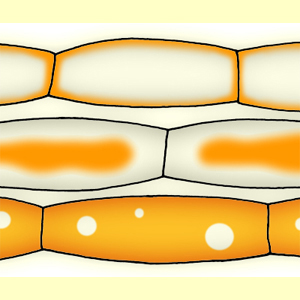
Observe pigmentation of the pileipellis hyphae in water mounts (some pigmentation dissolves in alkali solutions). Encrustations of hyphae are generally referred to as 'pigment' whether or not they are coloured.
If terminal elements of the pileipellis have large outgrowths, see Pileipellis terminal elements (surface).
Pigment may be present in other structures, such as cheilocystidia. This feature refers specifically to the hyphae of the pileipellis.
Choose this state if: intracellular or membrane pigmentation is present. Intracellular pigmentation is where the contents of hyphae are coloured. Pigmentation of the contents may be cytoplasmic and/or vacuolar.
Membrane pigments occur in the outer membranes of hyphae, or may be present as encrustation on the inner side of the outer wall. Membranal pigments are also referred to as intraparietal pigments.
